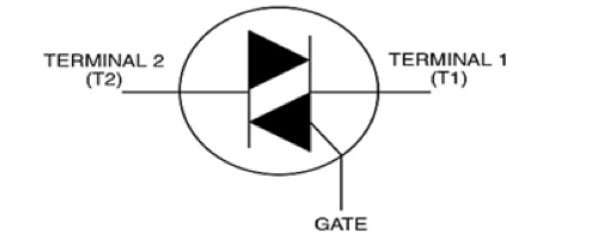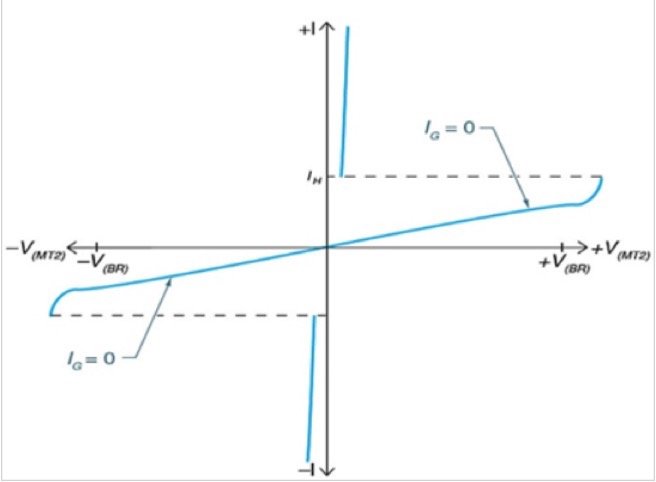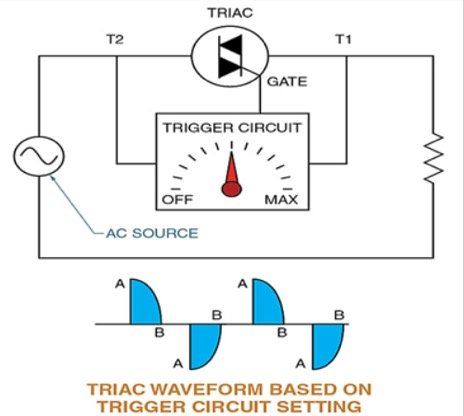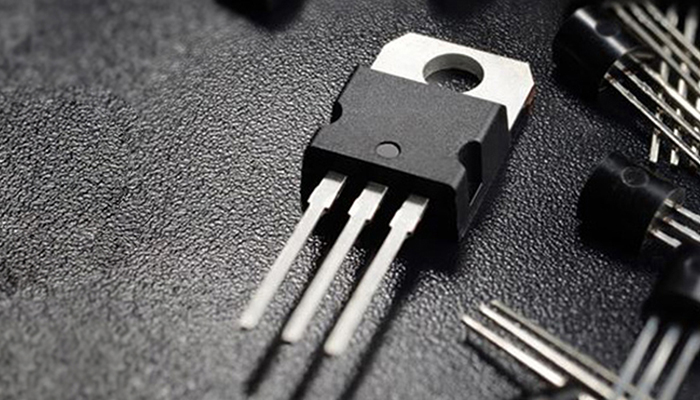Thyristors are used mostly with high voltages and currents. The triode for alternative current (TRIAC) and silicon controlled rectifier (SCR) are the most commonly used thyristor devices.

What is a TRIAC?
A TRIAC is a bidirectional, three-electrode AC switch that allows electrons to flow in either direction. It is the equivalent of two SCRs connected in a reverse-parallel arrangement with gates connected to each other.
A TRIAC is triggered into conduction in both directions by a gate signal like that of an SCR. TRIACs were designed to provide a means for the development of improved AC power controls.
TRIACs are available in a variety of packaging arrangements. They can handle a wide range of current and voltage. TRIACs generally have relatively low-current capabilities compared to SCRs — they are usually limited to less than 50 A and cannot replace SCRs in high-current applications.
TRIACs are considered versatile because of their ability to operate with positive or negative voltages across their terminals. Since SCRs have a disadvantage of conducting current in only one direction, controlling low power in an AC circuit is better served with the use of a TRIAC.
TRIAC Construction
Although TRIACs and SCRs look alike, their schematic symbols are dissimilar. The terminals of a TRIAC are the gate, terminal 1 (T1), and terminal 2 (T2).
TRIAC Triggering Circuit and its Advantages
TRIACs block current in either direction between T1 and T2. A TRIAC can be triggered into conduction in either direction by a momentary positive or negative pulse supplied to the gate.
If the appropriate signal is applied to the TRIAC gate, it conducts electricity. The TRIAC remains off until the gate is triggered at point A.

At point A, the trigger circuit pulses the gate, and the TRIAC is turned on, allowing the current to flow.
At point B, the forward current is reduced to zero, and the TRIAC is turned off.
The trigger circuit can be designed to generate a pulse that changes in the positive or negative half-cycle at any point. Consequently, the average current delivered to the load can vary.
One advantage of the TRIAC is that virtually no power is wasted by being converted to heat. Heat is generated when the current is impeded, not when the current is switched off. The TRIAC is either fully ON or fully OFF. It never partially limits current.
Another essential feature of the TRIAC is the absence of a reverse breakdown condition of high voltages and high currents, such as those found in diodes and SCRs.
If the voltage across the TRIAC goes too high, the TRIAC is turned on. Once on, the TRIAC can conduct a reasonably high current.
The Characteristic Curve of TRIACs
The characteristics of a TRIAC are based on T1 as the voltage reference point. The polarities shown for voltage and current are the polarities of T2 with respect to T1.
The polarities shown for the gate are also with respect to T1. the TRIAC may be triggered into conduction in either direction by a gate current (IG) of either polarity.

TRIAC Applications
TRIACs (Triode for Alternating Current) are semiconductor devices widely used for controlling power in AC systems. They function as bidirectional switches, allowing control over the power delivered to the load during both halves of the AC cycle. Here’s an overview of their applications:
Lighting Control
Dimmers: TRIACs are used in light dimmers to adjust the brightness of incandescent and some LED bulbs by varying the power delivered.
Stage Lighting: TRIACs enable smooth dimming and control in professional lighting systems.
Motor Control
Fan Speed Controllers: TRIACs are used to control the speed of ceiling fans and exhaust fans.
Household Appliances: TRIACs regulate motor speed in blenders, mixers, and washing machines.
Temperature Control
Heaters: TRIACs are employed in thermostats and temperature controllers to adjust heating levels.
Industrial Ovens: They ensure precise temperature management in industrial heating applications.
Home Appliances
Vacuum Cleaners: TRIACs help adjust motor speeds for efficient cleaning.
Electric Cookers and Toasters: They provide power control for heating elements.
Industrial Applications
Phase Control: Used in industrial phase angle control for AC loads.
Power Tools: TRIACs regulate power to electric drills, saws, and other tools.
Electronic Power Regulation
Voltage Regulators: TRIACs help in stabilizing voltage and power in circuits.
Uninterruptible Power Supplies (UPS): They are used for controlling power flow in UPS systems.
AC Switching
Relay Replacement: TRIACs act as solid-state relays for switching AC loads, improving reliability and speed.
Timers and Programmable Devices: Used in controlling appliances like washing machines and dishwashers.



